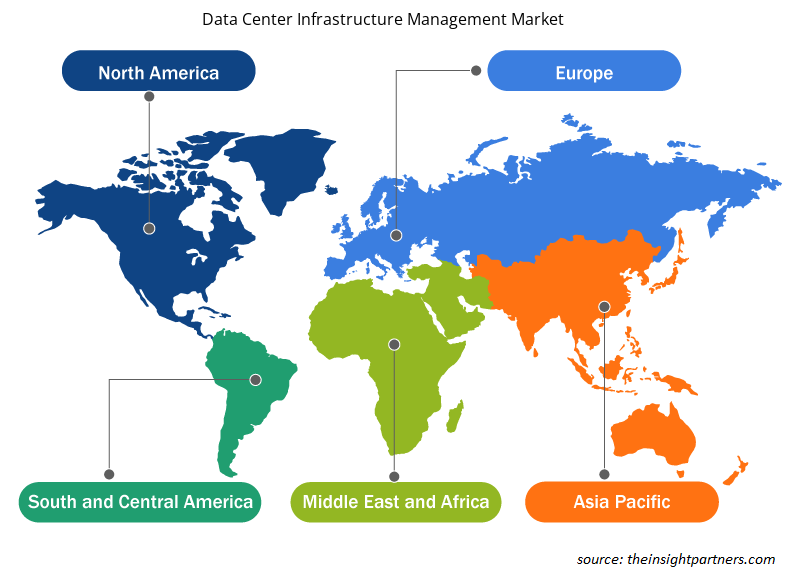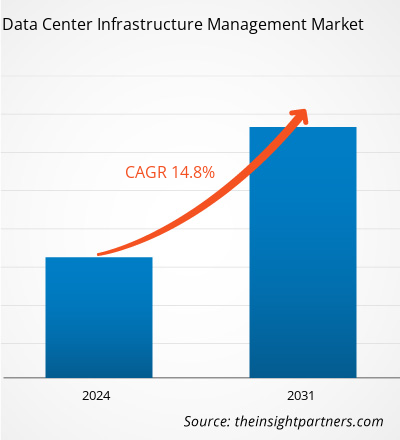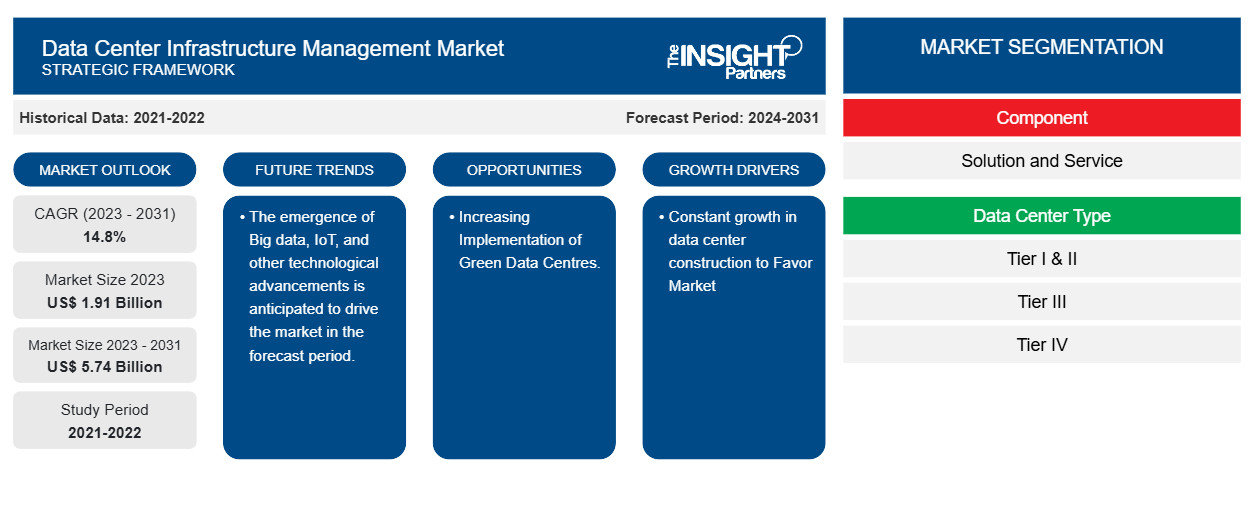数据中心基础设施管理市场规模预计将从 2023 年的 19.1 亿美元增至 2031 年的 57.4 亿美元。预计 2023-2031 年期间,市场复合年增长率将达到14.8 %。数据中心 IP 流量的增加和端到端可视性的提高,以及云计算、大数据和人工智能的增长,可能仍是市场的主要趋势和驱动力。
数据中心基础设施管理市场分析
数据中心基础设施管理市场正在全球范围内增长。增长归因于数据中心 IP 流量的增加、端到端可视性的提高以及云计算、大数据和人工智能的增长。此外,组织倾向于使用基于云的安装来克服本地限制、各行各业的数字化程度不断提高以及私营部门对DCIM的依赖预计将为数据中心基础设施管理市场带来诸多机会。
数据中心基础设施管理市场概览
DCIM软件是用于监控和管理数据中心物理基础设施的软件。这包括电源和冷却系统、网络设备和服务器等。DCIM软件通常包含实时监控、容量规划和资产管理等功能。DCIM 软件的目标是通过提供整个基础设施的集中视图并自动执行日常任务来提高数据中心运营的效率和可靠性。
定制此报告以满足您的需求
您可以免费定制任何报告,包括本报告的部分内容、国家级分析、Excel 数据包,以及为初创企业和大学提供优惠和折扣
-
获取此报告的关键市场趋势。这个免费样品将包括数据分析,从市场趋势到估计和预测。
数据中心基础设施管理市场驱动因素和机遇
数据中心建设持续增长 市场利好
数据中心数量的持续增长可以成为数据中心基础设施管理市场的重要推动力。在大数据分析、人工智能、云计算和物联网 (IoT )的推动下,全球数据的生成和消费呈指数级增长。这需要更多的数据中心来存储、处理和分发这些数据,从而导致全球对建筑服务的需求不断增加。此外,随着云计算和数字服务在全球范围内的传播,对数据中心的需求超出了现有的枢纽。这为数据中心建设管理服务提供商开辟了新的市场和机会。因此,考虑到上述参数,数据中心建设的增长正在成为市场的驱动力。
不断增加的绿色数据中心的实施。
绿色数据中心旨在实现最大的能源效率并减少对环境的影响。为此,数据中心采用了减少碳足迹的策略,包括使用低排放建筑材料、最小化碳足迹、水和废物回收以及利用替代能源技术。这些替代技术包括热泵、光伏和蒸发冷却。为了实现能源效率和控制运营成本,一些公司已经开始采取措施减少数据中心的电力和水的使用。此外,这些公司除了对数据中心的设计进行必要的改变外,还安装了节水冷却设备和节能设备。这增加了对精确数据中心基础设施的需求。因此,预计绿色数据中心的不断实施将为市场带来许多机会。
数据中心基础设施管理市场报告细分分析
有助于得出数据中心基础设施管理市场分析的关键部分是组件、数据中心类型、应用程序和最终用户。
- 根据组件,数据中心基础设施管理市场分为解决方案和服务。预计解决方案部分将在预测期内占据相当大的市场份额。
- 根据数据中心类型,数据中心基础设施管理市场分为 I 级和 II 级、III 级和 IV 级。预计抗辐射设计 ( RHBD ) 部分将在预测期内占据相当大的市场份额。
- 根据应用,市场分为资产管理、网络管理、冷却管理、电源管理和安全管理。预计资产管理部门将在预测期内占据相当大的市场份额。
- 根据最终用户,市场分为 BFSI、制造业、IT 和电信、政府、医疗保健等。预计 IT 和电信部门将在预测期内占据相当大的市场份额。
数据中心基础设施管理市场份额分析(按地区)
数据中心基础设施管理市场报告的地理范围主要分为五个区域:北美、亚太、欧洲、中东和非洲、南美和中美。
北美主导着数据中心基础设施管理市场。这归因于云提供商的需求和区块链的大幅增长。在美国,德克萨斯州、奥斯汀、北加利福尼亚州和圣安东尼奥的某些地区的云活动相对较高。然而,美国和其他主要国家对数据中心的总体吸收和需求源于上一年的趋势。此外,美国和加拿大发达经济体高度重视研发,这迫使北美参与者将技术先进的解决方案引入市场。此外,美国拥有大量数据中心基础设施管理市场参与者,他们越来越专注于开发创新解决方案。所有这些因素都促进了该地区数据中心基础设施管理市场的增长。
数据中心基础设施管理市场区域洞察
Insight Partners 的分析师已详尽解释了预测期内影响数据中心基础设施管理市场的区域趋势和因素。本节还讨论了北美、欧洲、亚太地区、中东和非洲以及南美和中美洲的数据中心基础设施管理市场细分和地理位置。

- 获取数据中心基础设施管理市场的区域特定数据
数据中心基础设施管理市场报告范围
| 报告属性 | 细节 |
|---|---|
| 2023 年的市场规模 | 19.1亿美元 |
| 2031 年市场规模 | 57.4 亿美元 |
| 全球复合年增长率(2023 - 2031) | 14.8% |
| 史料 | 2021-2022 |
| 预测期 | 2024-2031 |
| 涵盖的领域 |
按组件
|
| 覆盖地区和国家 |
北美
|
| 市场领导者和主要公司简介 |
|
市场参与者密度:了解其对商业动态的影响
数据中心基础设施管理市场正在快速增长,这得益于最终用户需求的不断增长,而这些需求又源于消费者偏好的不断变化、技术进步以及对产品优势的认识不断提高等因素。随着需求的增加,企业正在扩大其产品范围,进行创新以满足消费者的需求,并利用新兴趋势,从而进一步推动市场增长。
市场参与者密度是指在特定市场或行业内运营的企业或公司的分布情况。它表明相对于给定市场空间的规模或总市场价值,有多少竞争对手(市场参与者)存在于该市场空间中。
在数据中心基础设施管理市场运营的主要公司有:
- 施耐德电气
- NIyte 软件有限公司
- Sunbird 软件公司
- Device42 公司
- UnityOneCloud
- 泛达
免责声明:上面列出的公司没有按照任何特定顺序排列。

- 获取数据中心基础设施管理市场顶级关键参与者的概览
数据中心基础设施管理市场新闻和最新发展
数据中心基础设施管理市场通过收集一手和二手研究后的定性和定量数据进行评估,其中包括重要的公司出版物、协会数据和数据库。数据中心基础设施管理市场的一些发展情况如下:
- 施耐德电气是能源管理和自动化数字化转型领域的全球领导者之一,该公司宣布对其 EcoStruxure IT 软件产品组合进行现代化升级,以监控和管理庞大的混合 IT 基础设施,而这些基础设施在过去几年中变得越来越复杂。(来源:施耐德电气,公司网站,2022 年 6 月)
- 伊顿推出了 Brightlayer 数据中心 DCIM 产品。它包括数据中心性能管理、电力监控和分布式 IT 性能管理软件。
(来源:伊顿,公司网站,2023 年 9 月)
数据中心基础设施管理市场报告范围和交付成果
“数据中心基础设施管理市场规模和预测(2021-2031 年)”报告对以下领域进行了详细的市场分析:
- 范围内涵盖的所有关键细分市场的全球、区域和国家层面的数据中心基础设施管理市场规模和预测。
- 数据中心基础设施管理市场趋势以及驱动因素、限制因素和关键机遇等市场动态。
- 详细的 PEST/波特五力分析和 SWOT 分析。
- 数据中心基础设施管理市场分析涵盖主要市场趋势、全球和区域框架、主要参与者、法规和最新的市场发展。
- 行业格局和竞争分析涵盖市场集中度、热图分析、知名参与者以及数据中心基础设施管理市场的最新发展。
- 详细的公司简介。
- 历史分析(2 年)、基准年、预测(7 年)及复合年增长率
- PEST和SWOT分析
- 市场规模、价值/数量 - 全球、区域、国家
- 行业和竞争格局
- Excel 数据集
近期报告
相关报告
客户评价
购买理由
- 明智的决策
- 了解市场动态
- 竞争分析
- 客户洞察
- 市场预测
- 风险规避
- 战略规划
- 投资论证
- 识别新兴市场
- 优化营销策略
- 提升运营效率
- 顺应监管趋势























 获取免费样品 - 数据中心基础设施管理市场
获取免费样品 - 数据中心基础设施管理市场